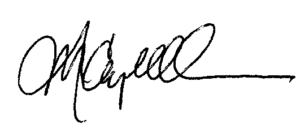Friends,
Every June, cries of “Happy Pride” ring out across the world as Lesbian, Gay, Bisexual, Transgender and Queer/Questioning (LGBTQ) Pride month is celebrated in honor of the 1969 Stonewall riots in Manhattan. Stonewall was the turning point for the LGBTQ community in the United States, and began the contemporary gay rights movement. The young activists who stood up to demand justice on the evening of June 27, 1969 did so because they were tired of the inhumane, discriminatory policies and practices imposed on their community. They wanted the same human rights that other New Yorker’s enjoyed: the right to assemble in safety and live free of harassment and violence.
Like other social justice movements, “Pride” takes a positive stand against negative public perception. It is an expression of LGBTQ identity. Pride is an internal and external self-affirmation, a manifestation of human dignity, and a call for equal rights. It is a mechanism to increase visibility as a community, and to share social and cultural identity. Pride is the antithesis of shame and stigma. It is the rallying cry that members of the LGBTQ community use to express the desire to be recognized as fully-actualized human beings.
“In Learning from other Movements: Gay Liberation and Recovery Advocacy”, Tom Hill and William White make the correlation between the societal stigma and discrimination that targeted members of the LGBTQ communities and those addicted to alcohol and other drugs. During the devastating AIDs epidemic, activists used “Silence = Death” to demonstrate a growing awareness that shame and stigma were connected to homophobia. And that connection had a direct impact on the woeful lack of resources dedicated to addressing the epidemic. As the death toll climbed for individuals diagnosed with AIDs, so did the number of people who stepped out of the shadows of their secret identities. These brave activists were joined by family members and allies who called for greater access to affordable, high-quality treatment and support services.
Like our counterparts in the LGBTQ rights movement, recovery advocates have demonstrated the value of humanizing, organizing, and mobilizing by using multiple strategies to change the way the public views addiction and recovery. We use a multi-pronged approach to be visible, viable and vocal. Some of us engage in public protest, while others educate family and community members. There are those who advocate on the micro and macro levels, and push for legislative and regulatory changes to advance our cause. Like our allies in the LGBTQ movement, the most critical and powerful strategies involve brave individuals who stand up and share their personal stories. These are the actions that change the hearts and minds of decision makers. “The recovery advocacy movement is also employing varied change strategies,” Hill and White write, “but its ultimate success may rest on the number of recovering people in the U.S. who choose to disclose this status in their personal interactions and at public levels.”
On June 10th, intergenerational LGBTQ and Recovery advocates came out in Albany to express their collective pride. Youth and adults marched publically, joining forces with FOR-NY and friends at OASAS, YVM-NY, FOR-Schenectady, FOR-Albany, Summer’s Run, New Choices, HVCC Youth in Recovery, and other groups. Together, youth and adults educated the public about addiction treatment and recovery resources, and shared stories of hope and healing. We celebrated recovery, expressed our need for supports and services around health and well-being, and embraced the many pathways to recovery.
“Generational change can be a powerful force in advancing social movements,” note Hill and White. “Both the LGBTQ and recovery communities have the youngest people in history declaring their status at the private and public levels. Their opening is speeding changes in attitudes among their peers and the larger culture and they constitute what will be a new generation of leaders to carry these movements forward…”
If you haven’t done so already, I encourage you to register for our upcoming Recovery Conference as youth and older leaders come out to propel our movement forward. Let us continue to share our pride and push for progress with our allies across the state. Let us be bold and brave and not back down. Let us carry the message that anyone, anywhere, who reaches out for help will find the hand of hope and healing to always be there.

Stephanie Campbell
